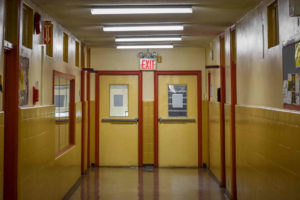
Fire safety in schools is critical to creating a safe learning workplace for students, teachers, and staff.
Fire safety in schools is critical to creating a safe learning workplace for students, teachers, and staff. With hundreds or even thousands of people congregating within school buildings daily, prioritizing fire prevention and preparedness is essential. Schools are responsible for ensuring that every student feels safe and protected, and effective fire safety protocols are one key to achieving this goal.
The Need for Fire Safety in Schools
Schools are bustling environments with unique fire safety needs. Classrooms, laboratories, cafeterias, gyms, and libraries each pose different potential fire hazards due to various materials, electrical equipment, and appliances in use. Ensuring fire safety in these areas is a proactive measure that helps prevent potential accidents, protects lives, and minimizes property damage. In the event of a fire, having a well-prepared plan significantly reduces chaos, injury, and loss, allowing students and staff to exit quickly and safely.
Fire-related incidents, even if minor, can lead to severe disruptions in learning. Therefore, fire safety plans are not only about emergency response but also about maintaining a consistent and stable educational environment. Schools that invest in robust fire safety measures protect their educational mission by fostering a safer, more resilient space for learning.
Core Elements of Fire Safety in Schools
Implementing a fire safety program in schools involves a multi-faceted approach. Here are some of the essential components that contribute to a comprehensive fire safety plan:
Fire Detection and Alarm Systems
Schools should be equipped with efficient fire detection and alarm systems, such as smoke detectors, heat sensors, and automated alarms. These systems are crucial in providing early warnings to everyone on campus, giving them ample time to evacuate. Regular maintenance and testing of these systems help ensure their reliability in case of an emergency.
Fire Drills and Evacuation Plans
Fire drills are one of the most effective ways to determine that everyone knows what to do in the event of a fire. Regularly scheduled fire drills familiarize students and staff with evacuation routes and safe areas. Evacuation plans should be clearly displayed in each classroom and throughout the school, highlighting exits and assembly points.
Proper Signage and Emergency Lighting
Clear signage and emergency lighting are essential to guide students and staff to safety during a fire. Exit signs should be well-lit and visible, and emergency lighting should be installed along exit routes to provide visibility if the main power supply is cut. These signs and lights can be literal lifesavers in smoke-filled or dark environments.
Fire Extinguishers and Suppression Systems
Schools should have fire extinguishers readily available in key locations such as classrooms, hallways, cafeterias, and science labs. Additionally, some areas, like kitchens or chemistry labs, may benefit from automatic fire suppression systems. Employees should receive training on using fire extinguishers so they can contain minor fires quickly.
Regular Inspection and Maintenance
Regular inspections of fire safety equipment, such as alarms, sprinklers, and extinguishers, help to identify any potential issues that could hinder safety efforts. Inspections should also cover electrical systems and flammable materials to prevent hazards that may lead to a fire.
Education and Awareness Programs
Teaching students about fire safety from a young age instills habits and awareness that they will carry with them throughout life. Schools can organize sessions that cover the basics of fire prevention, safe behavior during a fire, and the importance of staying calm. Empowering students with knowledge about fire safety can also reduce panic in emergencies, as they’ll know what to do and where to go.
The Benefits of a Strong Fire Safety Program
Schools with a proactive fire safety approach benefit in multiple ways. First and foremost, they create a safer environment for everyone on campus. A strong fire safety plan reduces the risk of injuries, fatalities, and property damage, which can have long-lasting effects on the school community. Additionally, schools that prioritize fire safety often see higher levels of trust and satisfaction from parents, staff, and students, who can feel secure in knowing that the school is committed to their well-being.
Furthermore, effective fire safety in schools minimizes the likelihood of extended closures or disruptions. Fire incidents can result in damaged infrastructure that may take months to repair, interrupting learning and creating logistical challenges. Preventive measures and preparedness ensure that the school can quickly resume normal operations after an incident if one were to occur.
Commercial and Residential Fire Prevention from Judd Fire Protection
If you want to ensure your home and business are safe throughout the year, trust Judd Fire Protection, LLC. We have over two decades of experience designing, installing, inspecting, and repairing residential and commercial fire protection systems. We serve clients throughout Maryland, Pennsylvania, Washington, D.C., Virginia, and West Virginia. If you are interested in finding out more about our services and protecting your home and business, give us a call at 410-871-3480.
